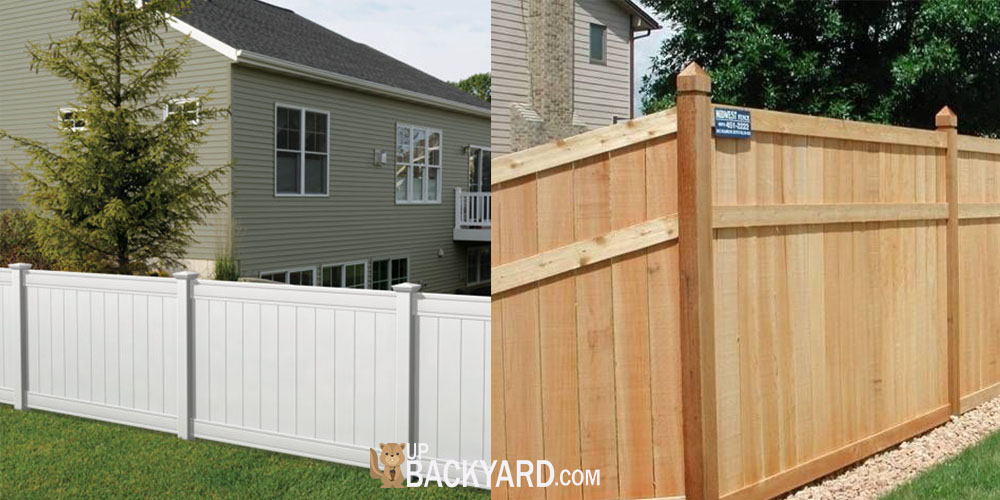When you notice that the fence surrounding your property is beginning to look a little worse for wear or you are thinking of painting it, you need to know who owns the fence.
While the only way to know for sure if the fence is on your property or your neighbors is to look into the deed of your property, there are other things you can try to find the ownership.
It is important to always get the permission of the owner of the fence before you do any repairing, de-doing, or even painting.
While many people think that the side that faces their property is “their fence”, legally it may not be.
If neighbors are not happy with the work done to a fence that is legally theirs, there can be consequences or fines.
Read on to learn the different ways to break down who the owner of the fence actually is.
How Do I Determine Who Owns the Fence?
Fences can fall in a few different places on property lines. Some fences are completely on your property, completely on your neighbor’s property, or directly down the property line.
Fences that go down the property line are called party fences and are shared property.
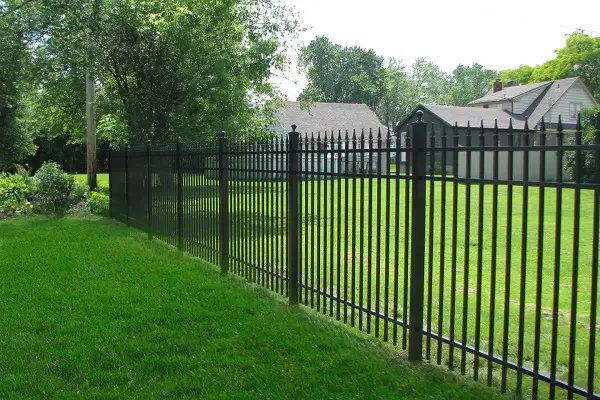
You can try to determine who owns the fence by the fence’s appearance, asking your neighbor, or pulling up land records and deeds.
Determining Fence Ownership by Appearance
Determining who owns the fence can be a very simple process if all parties are willing to be civil.
Typically, if you own the fence, the side with the supporting structures faces you while the “good side” of the fence faces your neighbors.
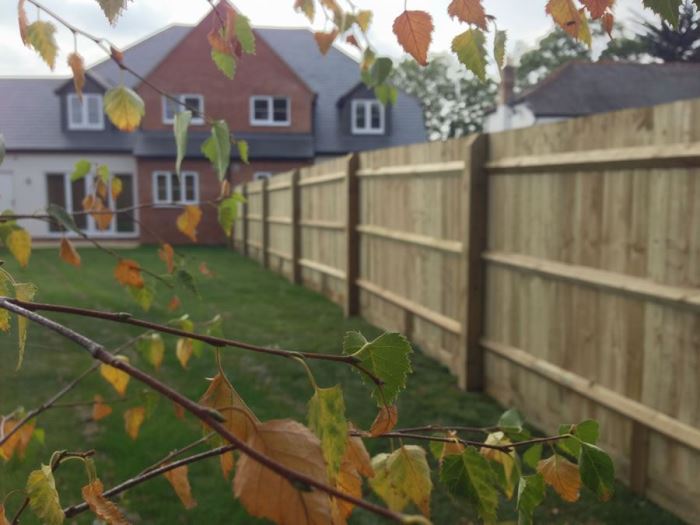
This means that while you own the fence, you do not get the aesthetically pleasing part of the fence for your viewing pleasure.
When you have this situation, you either have the fence on your property entirely or you have a party fence.
Your neighbor would most likely not put a fence on their property with the structural side directed at you.
If the fence is your property, you are responsible for maintaining the appearance and structure of the fence on both sides.
Safety is a big concern, especially as fences age. Metal fences can rust or snag, creating unsafe situations. Wooden fences can begin to rot or collect mildew.
Be sure to also check the ground near the fence. Animals could dig under the fence creating holes that someone could step in or pets could get stuck under.
Determine Fence Ownership by Conversation
While it may not be the most efficient and true answer to ownership, asking your neighbor is a good way to find out information about a fence.
If you are new to the home and the neighbor has been there much longer, they may have even put the fence in themselves.
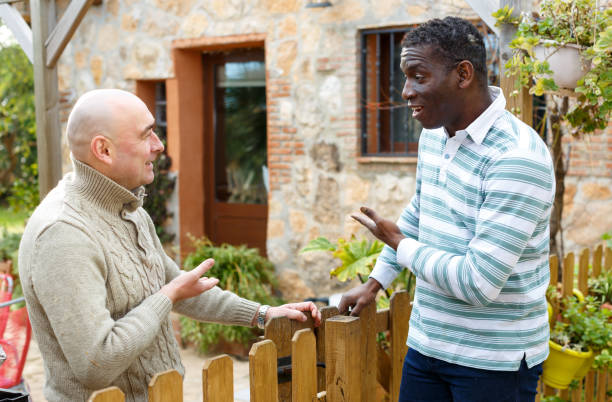
The neighbors may also know if the previous owners of your new home had put in a fence.
If the neighbors are also new to the area or the fence was put in before either of you purchased your homes, talking with the neighbor can help in other ways.
If you are hoping to paint or stain the side of the fence that faces you, asking the neighbor if they are okay with the project is a good way to avoid any problems down the line.
Usually, most people are not bothered if you do small projects on your side of the fence.
Determine Fence Ownership by Deed
The only way to know for certain who owns the fence is to look at records.
Most of the time, you can find the information you are looking for on your deed. But, if you cannot, you can request a land registry.
On the record, your property will be boxed in with a T. The T represents the edge of your boundary.
When the boundary is owned by one party, the T will stand alone. If the boundary is shared by neighbors, it will be marked with an H. The H actually is two Ts put together.
If the fence sits along the boundary line and the records show that the boundary is a shared boundary, your fence is considered a party fence.
When it comes to a party fence, both neighbors have equal rights and say in the fence.
It is important to know that even if your property boundary is shared, the fence may not be a party fence. You need to see where the fence is actually placed on the property.
Sometimes, the fence will be placed a few inches back from the property line so that the fence is owned by one party and not the other.
In the case where the fence is owned by one person and not the other, the fence is entirely the owners responsibility.
Proper maintenance and upkeep are the responsibility of the owner, but since you also enjoy the benefit of having a fence, it would be in your favor to ask if the neighbor minds if you help with the upkeep.
How Tall Can My Fence Be?
Most of the time, cities tend to cap the height for residential fences at 6 feet. However, there can be a few exceptions to this rule.
If the fence was built before the ordinance became law, the fence can be grandfathered in even if the height is taller than 6 feet.
The other exception is when a person applies for a variance. A variance is a one-time exception to a law that is approved on a case-by-case basis.
You might like: How To Pick Up Acorn At Yard? (5 Powerful Ways)
Can My Neighbor Cut My Tree That Comes Over The Fence?
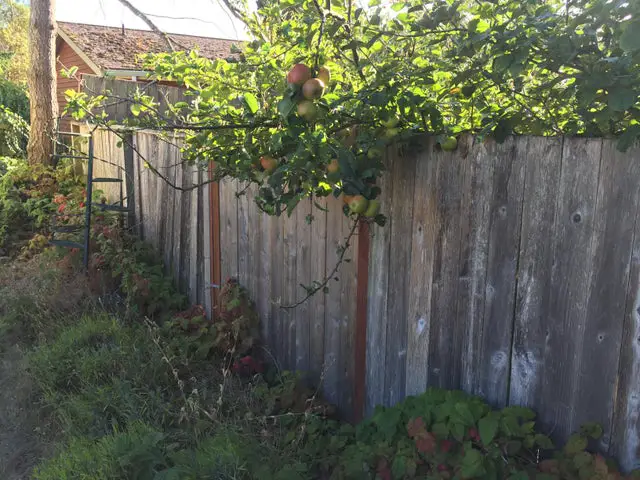
When it comes to fences on boundary lines, anything that falls on their side of the fence is considered theirs. This includes trees, shrubs, plants, and hedges.
However, they can only remove the parts of the plant that is overhanging into their yard and not any other parts of the hedge.
Who Owns the Tree if it Hangs Over the Fence?
You may have noticed that a large part of a tree that is rooted in your neighbor’s yard hangs over your side of the fence.
You may want to remove the tree that hangs into your yard, but are unsure because if you higher a tree trimmer, they will have to go into your neighbor’s yard to access it.
In a case like this, it is best to talk to your neighbor. Many times, trees are much older than the homes in the area and can grow to be massive, spreading into other boundaries.
If you remove the part of the tree that is on your side of the fence, it may leave too big of a wound and the tree will begin to rot.
Usually, paying half of the tree removal is fair. This would help you get the tree branches off of your yard without killing the whole tree or causing other issues.
If the neighbor refuses, you can contact the city and file a complaint!
My Neighbor’s Fence is Falling Apart, Can I Contact the City?
Yes. If your neighbor’s fence is falling apart or is not being kept up to safety standards, you can contact the city for help.
This is usually a last-ditch effort after talking with them has not progressed into anything being done.
If the fence is truly your neighbor’s, you cannot legally do anything to the fence even if it means fixing it.
The city will send a letter to the neighbor requesting they make the necessary changes or face penalties and fines.
Final Thoughts
Deciding who owns the fence is important for a variety of reasons. Maintaining, repairing, and keeping the fence up to safety standards are the responsibility of the owner.
You can determine the owner of a fence in a variety of ways. Looking to see if you have the “good side” or “the structural side of the fence” is one of the easiest ways to tell. While it is not always 100% accurate, if the structural side of the fence faces you, you own the fence.
Simply asking your neighbor is another simple way to help figure out fence ownership. Perhaps the neighbor put the fence in a few years before you moved in or they watched the previous owner put it in.
If the fence was there before the neighbor, you can always look at the property records. These records will show you exactly where your property ends and if you share the boundary or own the boundary.
Fences placed on a shared boundary are called party fences and both parties have equal rights to them. Meaning, both parties are responsible for their upkeep and maintenance.
Most fences can only be 6 feet high in residential settings. If the fence was erected before the law became code, it can be grandfathered in and bypass the law.
You can legally trim any plant, tree, or shrub that hangs over to your side of the fence, even if the plant is rooted in the neighbor’s yard.
If you think a tree needs to be removed and it hangs majorly over your fence, try to make a deal with your neighbor for removal.
If your neighbor refuses the removal or if they fail to keep their fence well maintained and safe, you can contact the city.
The city will come out and check the situation before sending a letter requesting they make the changes. If they fail to comply they may be facing fines or penalties.
